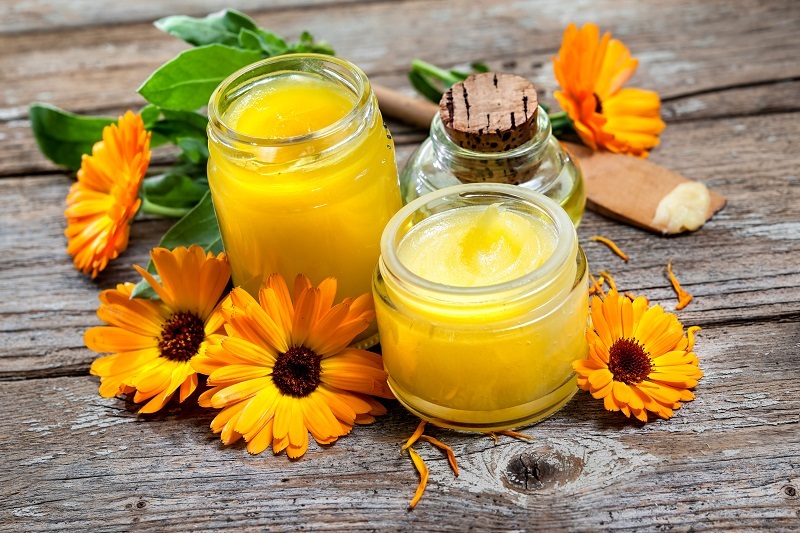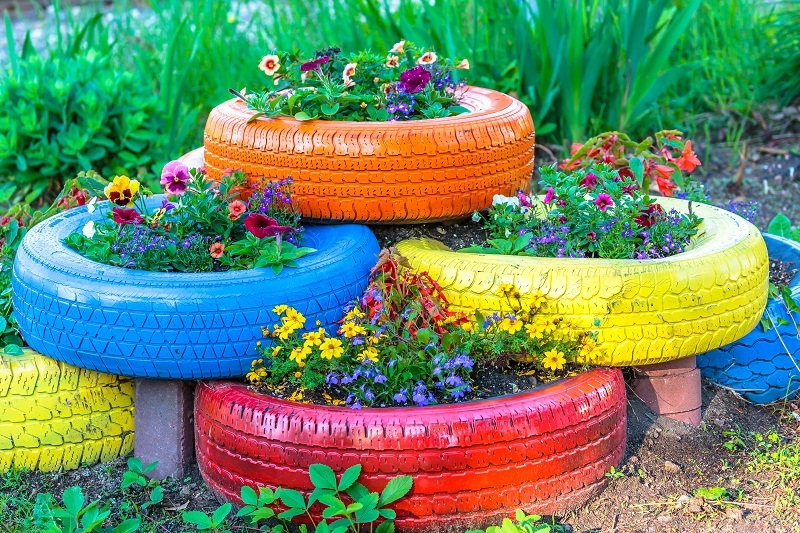Hydrangea Care: The Keys to Gorgeous Blooms
Posted on 07/09/2025
Hydrangea Care: The Keys to Gorgeous Blooms
Hydrangeas are beloved for their lush foliage and stunning, colorful blooms that can transform any garden into a show-stopping landscape. Whether you are a novice gardener or a floral enthusiast seeking to enhance your gardening skills, mastering hydrangea care is crucial for achieving those spectacular blossoms that everyone desires. In this comprehensive guide, you will discover the essential practices and tips for nurturing your hydrangeas to their full potential. Dive in to learn about optimal planting, watering, fertilizing, pruning, and much more to ensure your hydrangea shrubs flourish season after season.
Understanding Hydrangeas
Types of Hydrangeas
Before diving into care instructions, it's important to identify which type of hydrangea you have in your garden, as different species have unique requirements:
- Bigleaf hydrangeas (Hydrangea macrophylla): Known for their large, mophead or lacecap flowers, and the ability to change flower color based on soil pH.
- Panicled hydrangeas (Hydrangea paniculata): Recognized for cone-shaped blooms and robust growth; can tolerate more sun than other types.
- Oakleaf hydrangeas (Hydrangea quercifolia): Feature distinct oak-shaped leaves and white blooms that age to pink.
- Smooth hydrangeas (Hydrangea arborescens): Noted for their reliable blooming and big, round clusters; 'Annabelle' is a popular variety.
- Climbing hydrangeas (Hydrangea petiolaris): Unique vines suitable for trellises or walls, offering lacecap blossoms.
Determining your hydrangea species is the first step toward providing tailored care--ensuring healthier, more prolific blooms.

Planting Hydrangeas for Success
Site Selection
Choosing the right spot for your hydrangea plants is paramount. The ideal location ensures they receive:
- Morning sun and afternoon shade: Hydrangeas thrive in spots with filtered light. Too much direct sun, especially in hotter climates, can scorch their leaves and wilt blossoms.
- Well-draining soil: Avoid low areas where water collects. Hydrangeas dislike "wet feet."
- Protection from wind: A sheltered site preserves delicate flower heads and leaves.
When possible, plant your hydrangeas near north or east-facing walls or under dappled canopy trees for natural protection and ideal light exposure.
Soil Preparation
For gorgeous blooms, hydrangeas require rich, loamy soil. To prepare:
- Test soil pH: Bigleaf varieties, in particular, respond to soil pH. Acidic soil (pH less than 6) produces blue flowers, while alkaline soil (pH above 7) creates pink blooms.
- Enrich the soil: Mix in compost or well-rotted manure to enhance fertility and drainage.
- Avoid heavy clay soils unless amended with organic material and sand to improve texture.
How to Plant Hydrangeas
- Dig a hole twice as wide as the root ball and just as deep.
- Loosen the root ball gently with your hands to encourage outward growth of roots.
- Place the plant in the hole and backfill with amended soil.
- Water thoroughly after planting to settle soil around the roots.
- Add a 2-3" layer of mulch to conserve moisture and regulate soil temperature.
Watering Hydrangeas: The Foundation of Care
Consistent watering is essential for healthy hydrangeas, especially during establishment and the peak of the growing season. Here's how to get it right:
- Frequency: Hydrangeas prefer consistently moist, but not soggy, soil. Water deeply 1-2 times weekly rather than shallow, frequent sprinkling.
- Morning routine: Water in the morning to allow foliage to dry, preventing fungal diseases.
- Mulch matters: Organic mulch such as wood chips or pine needles helps retain soil moisture and suppresses weeds.
- Weather watch: Increase watering during droughts or extreme heat, but reduce in wet periods to avoid root rot.
Feeding Your Hydrangeas for Vibrant Blooms
Choosing the Right Fertilizer
Supplementing your hydrangeas' diet ensures robust growth and bountiful blooms.
- Balanced fertilizers (such as 10-10-10 or 12-4-8): Apply in spring and again in mid-summer, following package instructions.
- Specialty hydrangea fertilizers: Some brands offer blends formulated specifically for hydrangeas, containing vital nutrients and trace elements.
- For blue flowers: Apply aluminum sulfate if soil is not sufficiently acidic.
- For pink flowers: Use garden lime to raise soil pH and add phosphorus, which blocks aluminum uptake.
Tips for Fertilizer Application
- Fertilize after watering to avoid root burn.
- Spread fertilizer evenly at the drip line (where rain drips off leaves), then lightly scratch into soil.
- Overfertilizing can result in lush leaves but fewer blooms--follow dosage instructions carefully.
Pruning Hydrangeas: Timing and Technique
Proper pruning is key to gorgeous hydrangea flowers and healthy plants, but different species have different requirements. Understanding when and how to prune is vital for maximizing blossoms:
When to Prune
- Bigleaf, oakleaf, and climbing hydrangeas: Bloom on old wood (last year's stems). Prune immediately after flowering in late summer.
- Panicled and smooth hydrangeas: Bloom on new wood (current year's growth). Prune in late winter or early spring before new growth emerges.
How to Prune Hydrangeas
- Remove dead, damaged, or crossing branches at any time.
- Cut back spent flower heads to just above a set of healthy buds.
- For old, overgrown plants, rejuvenate by removing up to a third of the stems at ground level annually.
When in doubt, less is more--over-pruning can dramatically decrease blooms, especially on old-wood types.
Controlling Common Hydrangea Pests and Diseases
While generally hardy, hydrangeas can occasionally fall prey to pests and diseases that affect their beauty and health:
Common Pests
- Aphids: Small green insects monitored by inspecting the undersides of leaves.
- Spider mites: Cause stippling on leaves; controlled by regular misting and rinsing.
- Slugs and snails: Targeted by hand-picking or applying barriers around the base.
Common Diseases
- Powdery mildew: Fuzzy white growth on leaves. Improve air circulation and avoid overhead watering.
- Leaf spot: Brown or purple spots on foliage. Remove and destroy affected leaves; treat with fungicide if severe.
- Root rot: Caused by waterlogged soil; avoid by not overwatering and improving drainage.
Early detection and prompt action help prevent widespread problems and ensure hydrangea care success.
Hydrangea Colors: Soil Chemistry and Magic
One of the unique wonders of hydrangeas, especially Hydrangea macrophylla, is their ability to change flower color based on soil chemistry:
- Blue blooms: Achieved on acidic soils (pH 5.2-5.5) with high aluminum availability.
- Pink blooms: Result from alkaline soils (pH 6.5-7.0) where aluminum is limited.
- Purple or lavender: Occurs in soils with pH levels between the extremes.
To change or maintain your hydrangea flower color:
- Add aluminum sulfate to acidify soil (for blue blooms).
- Apply garden lime to make soil more alkaline (for pink blooms).
- Test soil annually and adjust as needed, since color changes gradually and may take one season or longer.
Hydrangea Winter Care: Protecting Plants During Cold Months
Proper winter care is essential for ensuring your hydrangeas survive and thrive through harsh weather:
- Mulch heavily: Apply a thick layer (up to 6") of straw, leaves, or pine needles around the base after the ground freezes.
- Cover with burlap: For young or tender varieties, wrap stems loosely with burlap in late fall to prevent desiccation and sun scald.
- Withhold fertilizer: Stop feeding in late summer to allow plants to harden off for winter.
- Water before ground freezes: Hydrate well in late autumn, but avoid soggy soil.
By taking these measures, you'll protect buds and roots, ensuring abundant hydrangea flowers come spring.
Propagating Hydrangeas: Growing More Beauties
Want to expand your hydrangea collection or share with friends? Propagation is straightforward and gratifying:
Propagation by Cuttings
- In early summer, select a healthy, non-blooming shoot.
- Snip a 4-6 inch section just below a leaf node.
- Remove the lower leaves; dip the cut end in rooting hormone.
- Insert into moist potting mix or a sand-peat blend.
- Cover with a clear plastic bag to maintain humidity and keep in bright, indirect light.
- Roots develop in 2-4 weeks. Transplant to the garden once strong and established.
Layering Method
- Bend a low-growing stem to the ground, remove a leaf or two, and scrape a small section of the stem lightly.
- Pin this section down with a wire or stone, cover with soil, and keep moist.
- Once rooted, cut from the parent plant and transplant.
Common Hydrangea Care Mistakes to Avoid
- Over-pruning: Especially with old-wood bloomers; can eliminate the next season's flowers.
- Improper watering: Both underwatering and overwatering stress plants and diminish blooms.
- Ignoring soil pH: Affects flower color and nutrient availability for healthy hydrangea care.
- Too much direct sun: Can cause scorched leaves and faded flowers, especially in hot climates.
- Forgetting to mulch: Makes roots more susceptible to drought and temperature extremes.

Frequently Asked Questions: Hydrangea Care
Why aren't my hydrangeas blooming?
Buds may be lost due to late spring frosts, improper pruning, or over-fertilization with nitrogen. Ensure correct pruning and avoid overfeeding.
Do hydrangeas need full sun?
Most types prefer morning sun and afternoon shade. Too much sun can stress plants; too little can reduce flowering.
How often should I water hydrangeas?
Water deeply 1-2 times per week, adjusting for rainfall and temperature. Mulch to retain moisture.
Can I grow hydrangeas in containers?
Absolutely! Use a large pot with drainage holes, high-quality soil, and monitor water and fertilizer closely due to quicker drying.
How to make hydrangeas bloom bigger?
Feed appropriately, ensure optimal water and mulch, and prune at the right time for your hydrangea species.
Conclusion: The Secret to Stunning Hydrangea Blossoms
Hydrangea care is both a science and an art. By understanding your plant's unique needs and committing to consistent, thoughtful gardening practices, you unlock the full potential of these remarkable shrubs. Remember to plant in the right location, water and feed correctly, prune with care, and adjust soil chemistry for color preference. With attention to each aspect detailed above, gorgeous hydrangea blooms will reward your efforts year after year, filling your garden with beauty, color, and endless inspiration. Happy gardening!







